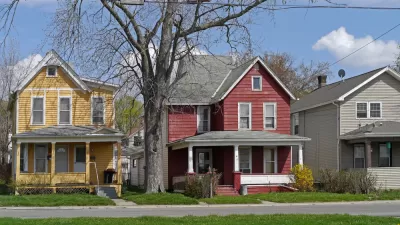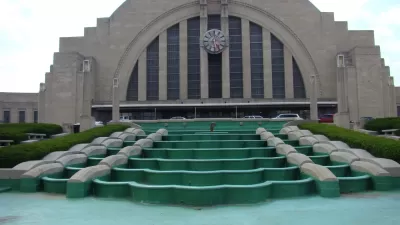The emotional attachment to old homes can obscure the benefits of new buildings, which consume less energy and provide more amenities for residents.

As housing prices continue their astronomic rise and the supply of housing remains inadequate, writes M. Nolan Gray, "Americans are paying ever more exorbitant prices for old housing that is, at best, subpar and, at worst, unsafe." Despite sentimental attachments to old homes and historic properties, Gray argues that new construction is objectively better: safer, more cost-effective, and more energy-efficient than older houses. Gray points to lead house paint(legal until 1978), lead pipes(common until the 1980s), faulty electrical systems, and poor accessibility as some of the issues that should make older homes less desirable. Modern homes provide mandatory safety features such as sprinkler systems, use less energy for heating and cooling thanks to improved insulation and HVAC technology, and include amenities like larger bathrooms and in-unit laundry.
Despite this, cities across the country make it difficult or nearly impossible to redevelop old housing stock, often in the name of affordability or historic preservation. "Between apartment bans, strict density limits, and minimum parking requirements, taking an old home and turning it into an apartment building, or even two or three modern townhouses, is in many cases illegal," asserts Gray.
By contrast, Japan takes a different approach to redevelopment: the average home in that country is demolished after 30 years, with 87 percent of homes sold being new, while a steady supply of newly constructed homes keeps Tokyo affordable for its growing population.
FULL STORY: Stop Fetishizing Old Homes

Alabama: Trump Terminates Settlements for Black Communities Harmed By Raw Sewage
Trump deemed the landmark civil rights agreement “illegal DEI and environmental justice policy.”

Study: Maui’s Plan to Convert Vacation Rentals to Long-Term Housing Could Cause Nearly $1 Billion Economic Loss
The plan would reduce visitor accommodation by 25% resulting in 1,900 jobs lost.

Planetizen Federal Action Tracker
A weekly monitor of how Trump’s orders and actions are impacting planners and planning in America.

Wind Energy on the Rise Despite Federal Policy Reversal
The Trump administration is revoking federal support for renewable energy, but demand for new projects continues unabated.

Passengers Flock to Caltrain After Electrification
The new electric trains are running faster and more reliably, leading to strong ridership growth on the Bay Area rail system.

Texas Churches Rally Behind ‘Yes in God’s Back Yard’ Legislation
Religious leaders want the state to reduce zoning regulations to streamline leasing church-owned land to housing developers.
Urban Design for Planners 1: Software Tools
This six-course series explores essential urban design concepts using open source software and equips planners with the tools they need to participate fully in the urban design process.
Planning for Universal Design
Learn the tools for implementing Universal Design in planning regulations.
Caltrans
Smith Gee Studio
Institute for Housing and Urban Development Studies (IHS)
City of Grandview
Harvard GSD Executive Education
Toledo-Lucas County Plan Commissions
Salt Lake City
NYU Wagner Graduate School of Public Service




























